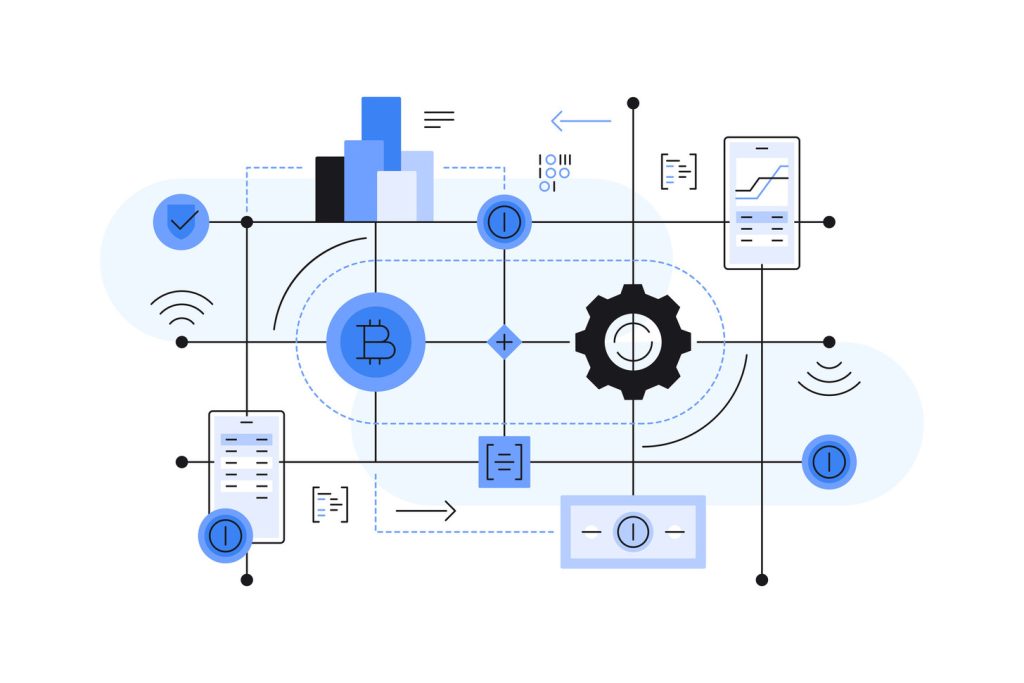Customer Effort Score (CES) Surveys: A Practical Implementation Guide

Measuring how easily clients resolve issues or complete tasks with a business directly impacts long-term success. Research shows organizations prioritizing low-effort experiences see 94% higher repurchase rates and 88% increased spending. This metric, often overlooked, serves as a critical predictor of loyalty and revenue growth.
Effective implementation starts with understanding friction points in every interaction. Whether during purchases, support requests, or account updates, unnecessary complexity drives dissatisfaction. Systems that track these hurdles enable teams to refine processes, boost satisfaction, and strengthen retention.
This guide offers step-by-step strategies to build measurement frameworks tailored to specific operational needs. It bridges theory with execution, highlighting how data-driven adjustments create seamless experiences. Leaders gain tools to align departments, eliminate redundancies, and foster brand advocacy.
Key Takeaways
- Low-effort interactions correlate strongly with repeat purchases and expanded client spending.
- Systematic measurement identifies pain points across service touchpoints.
- Proactive refinements based on feedback enhance satisfaction and loyalty.
- Operational alignment reduces friction, driving measurable revenue gains.
- Strategic implementation positions businesses ahead of competitors in experience quality.
Introduction: Why Reducing Customer Effort Matters
Businesses often underestimate how minor frustrations erode loyalty. A staggering 96% of clients facing complex processes abandon brands, compared to just 9% when interactions feel effortless. This gap reveals a truth: streamlined experiences outperform flashy perks in building lasting relationships.
The Impact of Effort on Satisfaction Levels
Clients judge brands by how smoothly they resolve issues. Long wait times, confusing processes, or repeated follow-ups create friction. Research confirms these hurdles directly damage satisfaction—67% of clients switch providers after one high-effort interaction.
Consider service recovery scenarios. When problems arise, speed and simplicity matter most. One study found 74% of clients prioritize quick resolutions over personalized service. Systems requiring multiple contacts or redundant steps amplify frustration, pushing clients toward competitors. To address these challenges, businesses must implement customer knowledge base optimization strategies that streamline the service process. By harnessing data effectively, companies can anticipate common issues and provide faster solutions, reducing the need for clients to reach out multiple times. Ultimately, enhancing the service experience not only retains customers but also boosts overall satisfaction and loyalty.
Driving Growth Through Simplicity
Low-effort interactions don’t just retain clients—they fuel expansion. Satisfied clients spend 140% more over time and refer others 3x more frequently. Companies prioritizing simplicity see:
- 31% higher repeat purchase rates
- 19% faster revenue growth
- 52% lower service costs
This approach impacts every lifecycle stage. From onboarding to renewals, reducing complexity builds trust. Clients reward brands that respect their time with loyalty and increased spending.
Understanding Customer Effort Score (CES) Surveys

Modern businesses thrive when interactions require minimal strain from users. The Customer Effort Score (CES) framework quantifies this principle, offering a lens to evaluate how smoothly clients navigate processes. Unlike satisfaction metrics, CES zeros in on tangible friction points—those moments where unnecessary complexity tests loyalty.
Defining the Customer Effort Metric
CES measures the energy required to complete specific tasks, like resolving issues or accessing support. It uses a standardized scale, often asking: “How much effort did you expend to achieve your goal?” Responses reveal patterns—low scores signal seamless experiences, while high marks expose systemic barriers.
This metric’s power lies in its immediacy. Surveys deployed post-interaction capture real-time sentiments, bypassing recall bias. Teams gain precise data to streamline workflows, from simplifying checkout steps to accelerating service resolutions.
The Role of CES in Modern Customer Experience
Forward-thinking organizations embed CES analysis into their operational DNA. By tracking effort levels across touchpoints, they pinpoint where processes falter. A shipping company, for example, might discover address-change procedures causing undue delays—a fixable gap invisible to traditional metrics.
CES complements broader strategies by answering a critical question: Where do clients feel friction? Combined with loyalty or satisfaction data, it creates a complete picture of experiential strengths and weaknesses. This dual focus drives targeted improvements that boost retention and operational agility.
What is Customer Effort Score (CES)?
Operational excellence hinges on quantifying how smoothly users achieve goals with a brand. The Customer Effort Score (CES) measures the energy required to complete tasks like resolving issues or making purchases. Unlike satisfaction metrics, this tool focuses on tangible friction points during interactions, offering actionable insights into process efficiency.
Businesses deploy structured questions immediately after transactions to gauge perceived difficulty. A common prompt asks: “How easy was it to accomplish your objective today?” Responses typically use a 1-7 scale, with low scores signaling seamless experiences and high numbers revealing systemic obstacles.
This metric excels at pinpointing operational bottlenecks traditional feedback tools miss. By capturing real-time perceptions, it identifies where processes demand unnecessary steps or complexity. Teams gain clarity on which touchpoints—like returns or account updates—require urgent simplification.
| Metric | Primary Focus | Response Insight | Optimal Use Case |
|---|---|---|---|
| CES | Task difficulty | Effort perception | Post-interaction analysis |
| NPS | Loyalty likelihood | Brand advocacy | Long-term relationship tracking |
| CSAT | General satisfaction | Emotional response | Overall experience evaluation |
Organizations adopting this approach uncover hidden barriers affecting retention. Immediate feedback loops let teams implement fixes before frustrations escalate, turning transactional moments into loyalty-building opportunities.
How to Measure Customer Effort Score Effectively

Precision in tracking user experience begins with robust measurement frameworks. Organizations gain actionable insights by combining straightforward calculations with strategic scale selection. This approach transforms raw feedback into targeted operational improvements.
Calculating the CES Score
The core formula simplifies analysis: sum all ratings and divide by total respondents. For instance, 500 users rating their experience as 5 creates a total of 2,500. Dividing this by 500 yields a final metric of 5. This numeric benchmark helps teams track progress across departments.
| Scale Type | Range | Best For | Advantages |
|---|---|---|---|
| Basic Numeric | 1-5 | Quick assessments | Fast comprehension |
| Likert Scale | 1-7 | Detailed feedback | Nuanced differentiation |
| Extended Range | 1-10 | Data segmentation | Granular analysis |
| Visual | Emoji-based | Low-literacy groups | Universal understanding |
Choosing the Right Scale for Accurate Feedback
Scale selection depends on audience and objectives. A 1-5 system suits transactional interactions, while 1-7 scales reveal subtle friction points. Emoji-based options improve response rates among younger demographics or global audiences.
Consistency remains critical. Teams should maintain identical scales across touchpoints to enable trend comparisons. For example, support calls might use 1-7 ratings, while checkout processes employ emoji scales—as long as each channel follows established protocols.
CES Survey Design: Crafting Effective Questions
Designing impactful surveys starts with precise question formulation that captures authentic user experiences. Clear phrasing eliminates ambiguity, ensuring responses reflect true perceptions rather than confusion. This requires balancing simplicity with specificity to maintain data integrity.
Writing Clear and Direct Survey Questions
Neutral language prevents bias in feedback collection. Instead of asking, “How much effort did our team save you?”, use “How would you rate the ease of completing your request?”. Teams should prioritize action-oriented verbs like “resolve” or “achieve” over abstract terms.
| Question Type | Example | Best Use Case | Strength |
|---|---|---|---|
| Statement | “It was simple to update my account details.” | Post-transaction analysis | Reduces response fatigue |
| Direct | “How easy was it to find the information you needed?” | Website navigation checks | Encourages quick replies |
Incorporating Open-Ended Follow-Up Questions
Free-text fields transform numerical scores into actionable insights. After a rating question, add “What could have made this process easier?” to identify specific friction points. This approach reveals patterns like repeated password resets or unclear return policies.
Strategic sequencing improves completion rates. Place critical questions first and limit surveys to 3-5 items. For multilingual audiences, use translation tools to ensure phrasing retains neutrality across cultures.
The Right Timing for Sending CES Surveys

Capturing authentic feedback requires strategic timing aligned with user experiences. Immediate deployment ensures responses reflect actual perceptions rather than reconstructed memories. This precision helps organizations identify friction points before they affect loyalty.
Trigger Points After Key Engagements
Optimal survey deployment follows specific milestones in the user journey. These moments reveal how effectively systems meet expectations during critical tasks. Data collected within minutes of completion yields 73% higher accuracy than delayed requests.
| Interaction Type | Optimal Timeframe | Data Relevance |
|---|---|---|
| Service Resolution | 5-15 minutes post-chat | Measures support efficiency |
| Purchase Completion | During order confirmation | Assesses checkout simplicity |
| Onboarding Step | After first feature use | Evaluates setup clarity |
| Self-Service Tool | Upon closing knowledge base | Tests resource effectiveness |
Post-purchase surveys work best when embedded in order confirmation screens. This placement avoids disrupting satisfaction while measuring transaction ease. For onboarding processes, trigger surveys after users complete initial setup tasks rather than final account activation.
Renewal phases benefit from timed feedback requests during upgrade confirmation pages. Immediate data collection identifies bureaucratic hurdles before contract decisions solidify. Organizations using this approach reduce process abandonment by 29% on average.
Distribution Channels for CES Surveys
Effective feedback collection requires strategic use of accessible platforms where users naturally engage. Organizations achieve higher response rates by deploying surveys through channels aligned with user behavior patterns. This approach captures authentic insights while respecting participant preferences. Incorporating these channels into existing workflows can enhance the overall user experience and drive engagement. By utilizing effective customer feedback strategies, organizations can tailor their offerings to better meet the needs of their audience. Furthermore, continuous refinement of feedback methods ensures that the insights gathered remain relevant and actionable over time.
Email, SMS, and On-Site Pop-Ups
Email remains a top channel for detailed feedback requests, particularly after complex interactions like support resolutions. SMS excels for quick pulse checks—96% of messages are opened within 3 minutes. On-site pop-ups capture real-time reactions during website visits or app usage.
| Channel | Optimal Use | Response Rate |
|---|---|---|
| Post-service follow-ups | 18-25% | |
| SMS | Transactional interactions | 32-40% |
| Pop-Ups | Checkout processes | 12-19% |
Automated triggers maintain relevance by launching surveys immediately after specific actions. For example, shipping confirmation pages might display a pop-up asking: “How easy was tracking your package?”
Ensuring Mobile-Friendly Survey Design
With 68% of feedback submissions occurring on smartphones, responsive layouts are non-negotiable. Key mobile design principles include:
- Single-column formats for thumb-scrolling
- Larger touch targets (minimum 48×48 pixels)
- Progress indicators for multi-page surveys
Incentives like 10% discounts boost participation but require careful implementation. Limit offers to every third survey to prevent habitual responders from skewing data. Integrated systems route responses directly into CRM platforms, enabling real-time service recovery for critical feedback.
Leveraging CES Data for Operational Improvements

Data-driven organizations transform feedback into fuel for process optimization. By systematically analyzing interactions, teams uncover hidden barriers affecting satisfaction and efficiency. This approach turns raw metrics into strategic roadmaps for reducing friction.
Analyzing Feedback to Identify Friction Points
Effective analysis begins with segmenting results by interaction type. Support ticket resolutions might show different pain points than product returns. Patterns emerge when comparing:
- Response clusters across departments
- Time-of-day variations in difficulty ratings
- Tool-specific completion success rates
Qualitative comments add depth to numerical scores. A user stating “password reset took three attempts” highlights specific system flaws. Teams prioritize fixes showing recurring themes across multiple channels.
Integrating CES with Other CX Metrics
Combining metrics creates multidimensional insights. CES explains why satisfaction scores dip, while NPS reveals long-term loyalty implications. A unified dashboard might display:
| Metric | Insight Provided | Action Trigger |
|---|---|---|
| CES | Process difficulty | Workflow redesign |
| CSAT | Emotional response | Staff training needs |
| NPS | Advocacy potential | Loyalty program adjustments |
This integration helps teams allocate resources effectively. High effort scores paired with low satisfaction indicate urgent process overhauls, while strong NPS with moderate CES suggests competitive differentiation opportunities.
Comparing CES to Other Customer Experience Metrics
Understanding how different metrics reveal unique insights helps organizations optimize interactions. While all track user perceptions, each tool answers distinct questions about operational performance and relationship strength.
Interaction Ease Versus Advocacy Potential
The Net Promoter Score gauges long-term brand loyalty by asking how likely users are to recommend services. This forward-looking metric identifies promoters but doesn’t explain why friction exists. In contrast, effort analysis pinpoints exact moments where processes create unnecessary strain during transactions.
Task Completion Versus Emotional Response
Customer Satisfaction Score surveys measure general sentiment about experiences. While useful for emotional temperature checks, they lack specificity about functional hurdles. Effort metrics complement this by revealing which steps in returns, support, or onboarding need simplification to boost satisfaction organically. To effectively enhance the insights gathered from these surveys, companies should implement customer satisfaction survey best practices, such as targeting specific touchpoints in the customer journey and tailoring questions to address key pain points. Additionally, integrating qualitative feedback can provide a deeper understanding of the issues faced, enabling businesses to prioritize improvements that directly impact the overall customer experience. By combining quantitative measures with actionable insights, organizations can systematically address barriers and elevate satisfaction levels.
Integrating these tools creates a complete diagnostic framework. Teams gain clarity on both emotional loyalty drivers and practical process improvements—a dual approach that elevates operational efficiency and strengthens retention.

